A strong onboarding experience can make all the difference in keeping great talent. Yet research from Gallup shows that just 29% of new employees feel their onboarding set them up for success.
That’s a missed opportunity.
HR teams and hiring managers play a crucial role in shaping those first few days and weeks. With the right structure, new hires feel informed, welcomed, and ready to contribute.
In this article, companies will find all the essential information they should include in their employee onboarding checklist.
Let’s get on board!
What Is an Employee Onboarding Checklist?
An employee onboarding checklist is a step-by-step guide that outlines everything a company needs to do to help a new hire settle into their role. It covers key tasks like completing paperwork, setting up tools and accounts, introducing team members, and walking through company policies and culture.
This checklist helps HR and managers stay organized and consistent, making sure organizations do not miss any critical steps during the onboarding process.
But onboarding isn’t just about ticking boxes. A strong checklist supports the basics while still allowing for adaptation to each employee’s unique role, needs, and experience level.
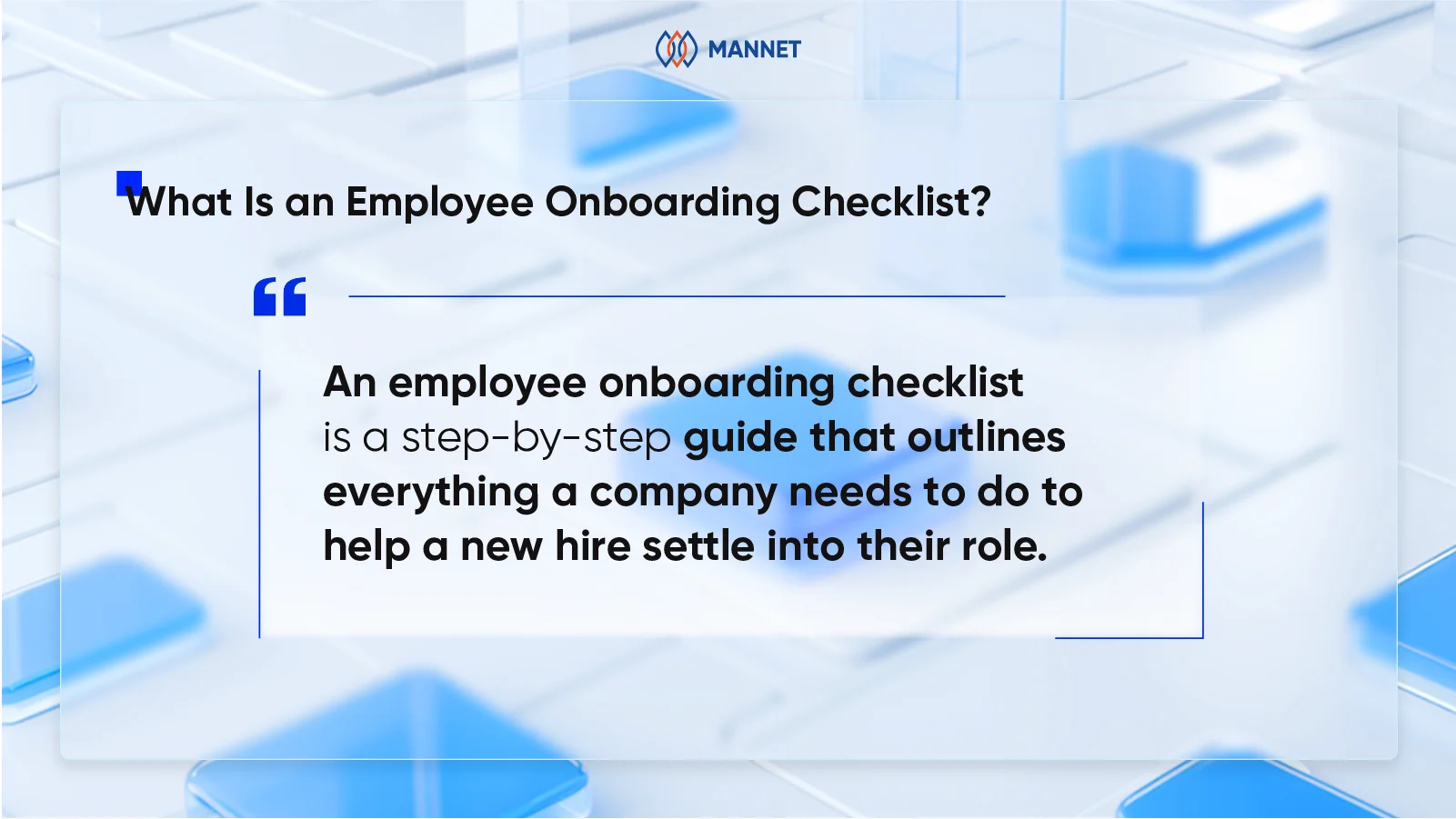
Employee onboarding checklist definition
Why Is an Employee Onboarding Checklist Important to New Hires?
Improved new hire productivity
When onboarding is structured and well-documented, new employees understand what’s expected of them from day one. When they receive the right tools, system access, and clear expectations from the beginning, they can start contributing sooner and with more confidence.
New hires shouldn’t spend their first week asking for logins, waiting for approvals, or figuring out processes on their own. A solid onboarding checklist keeps HR, IT, and team leads working together to create a smooth and productive start.
Boosted employee retention
Onboarding has a powerful impact on how new hires perceive the company from day one. Research by Brandon Hall Group shows that organizations with a strong onboarding process see an 82% increase in new hire retention and over a 70% boost in productivity.
When employees feel welcomed, valued, and informed from the start, they’re more likely to stay.
Consistent and efficient onboarding experience
Without a defined onboarding structure, processes can vary drastically across departments. This inconsistency can lead to confusion, missed steps, and poor employee experiences. A checklist brings consistency and accountability to the process.
It also helps HR managers and team leaders streamline workflows, reduce manual follow-ups, and make sure nothing slips through the cracks.
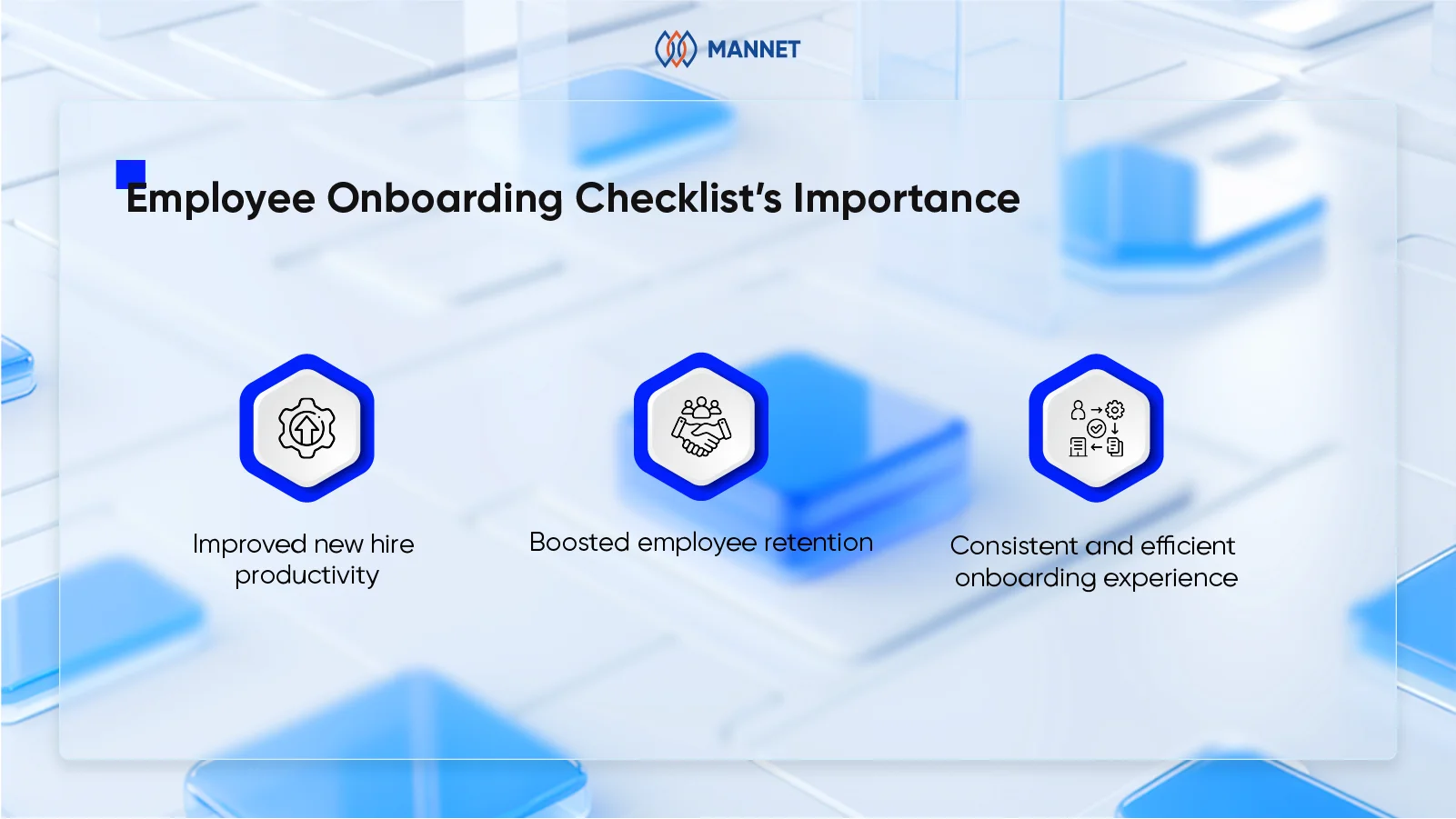
The importance of employee onboarding checklist
The Essential New Hire Onboarding Checklist
Phase 1. Preboarding
Preboarding occurs between the time a candidate signs the offer and their first day. It’s the opportunity to prepare internally while maintaining the new hire’s excitement and confidence.
Key elements of a preboarding checklist include:
- Sending a formal welcome email
- Confirming the start date, reporting manager, and schedule
- Sharing a digital copy of the employee onboarding documents checklist (ID proofs, signed offer letter, tax forms, etc.)
- Preparing IT equipment (laptops, monitors, access credentials)
- Creating internal accounts (email, project management tools, communication platforms)
- Assigning a mentor or onboarding buddy
- Sharing an overview of the team and organizational structure
For remote employees, keep all tech shipped and virtual introductions scheduled in advance. A solid remote employee onboarding checklist guarantees the same level of care and coordination as in-person onboarding.
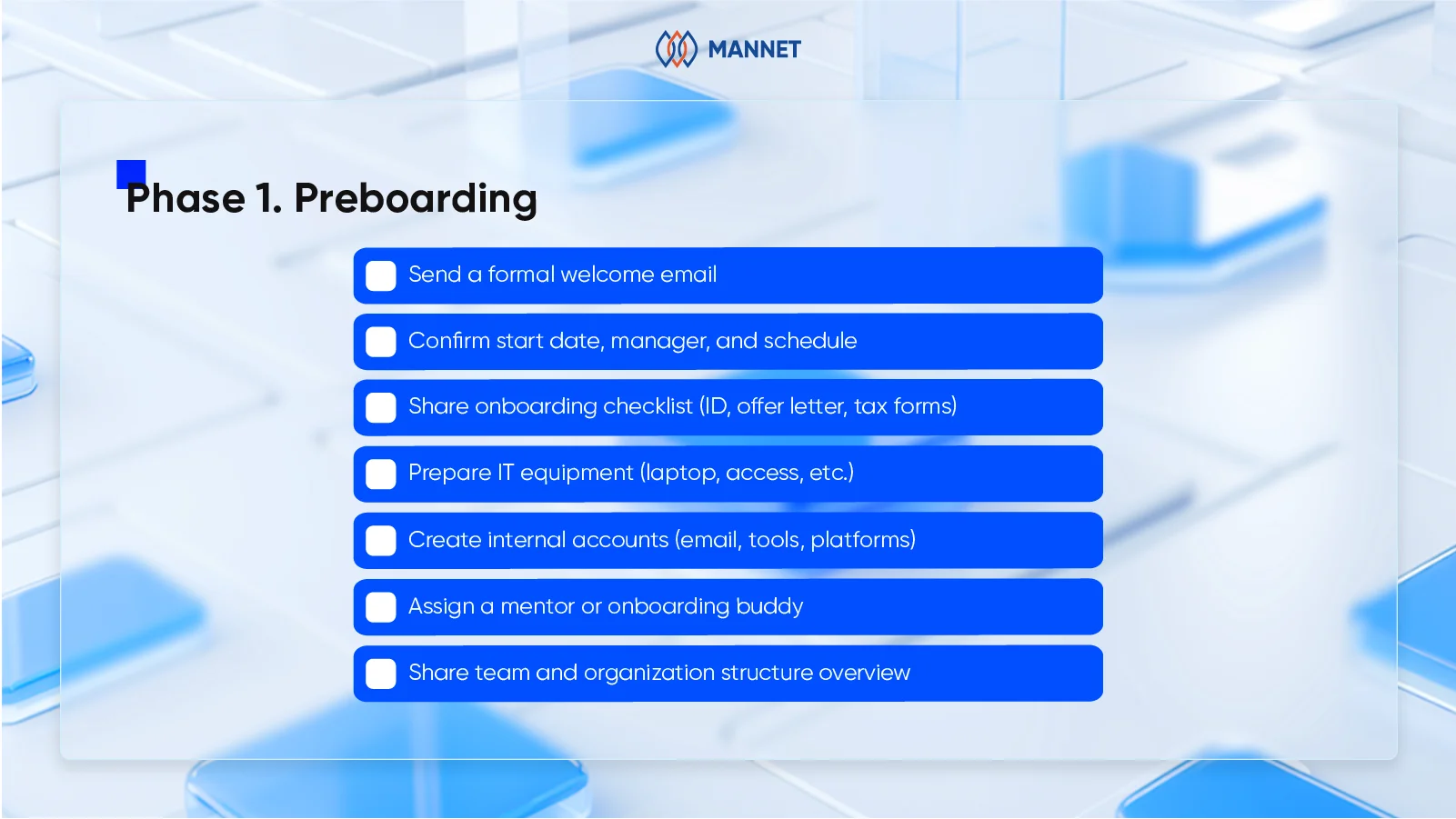
Preboarding Checklist
Phase 2. Orientation
Orientation is the time to start getting new hires settled at the organization. It’s a chance to create a positive emotional connection and align the new hire’s expectations with company values.
Orientation checklist items may encompass:
- Team introductions (both functional and cross-functional)
- Welcome message from leadership
- Walkthrough of mission, vision, and company values
- HR policies and compliance briefings
- Product or service demos
- Office tour (for on-site employees) or virtual workspace overview
- Cultural norms (communication styles, decision-making processes, performance feedback loops)
This is also a good time to explain how the company measures success, which projects are on the horizon, and what tools they’ll be using daily.
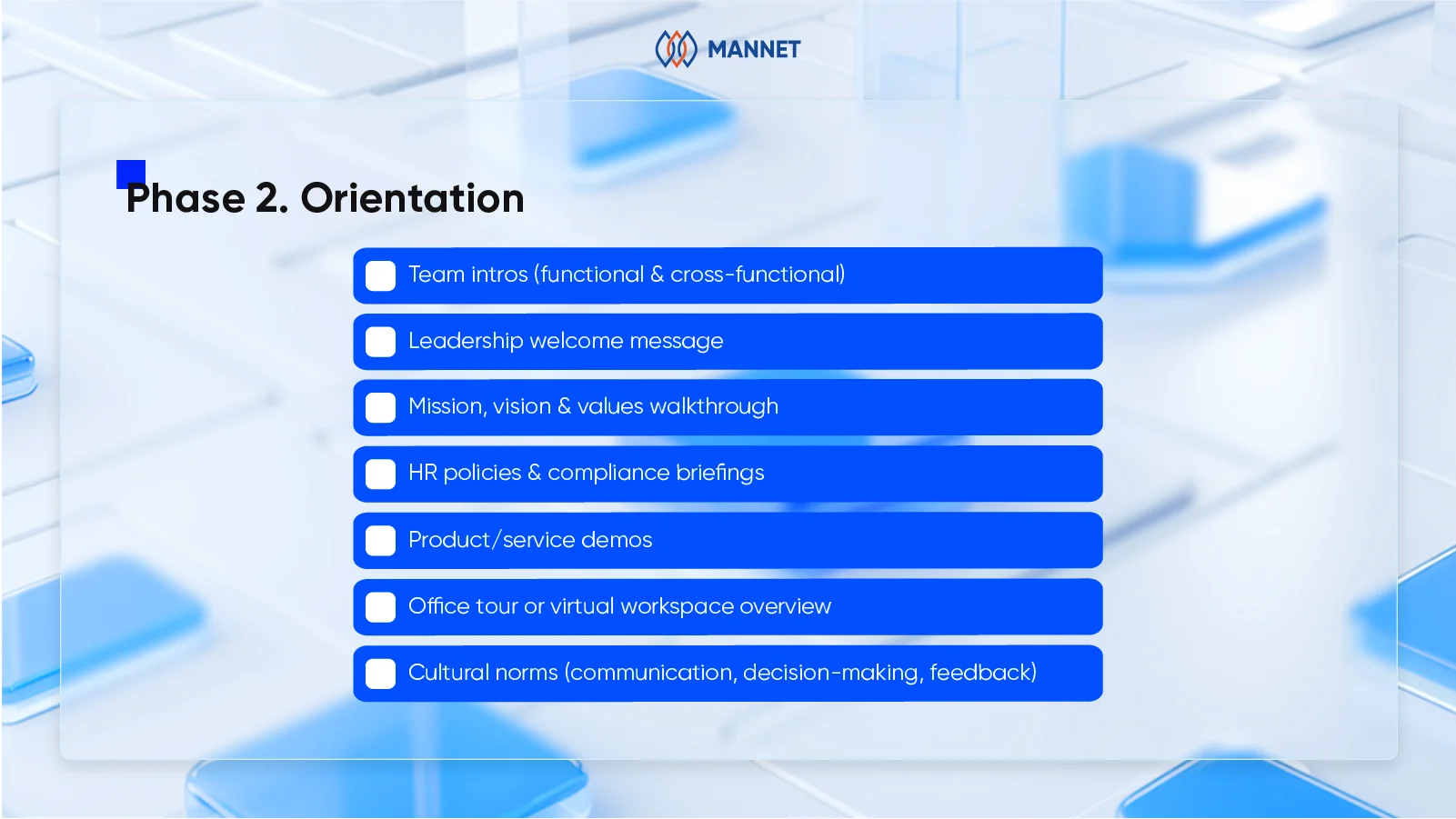
Orientation checklist
Phase 3. Training and ongoing development
The third phase of the onboarding a new employee checklist focuses on equipping new hires with the skills, knowledge, and confidence to thrive in their role.
Common elements in this phase include:
- Role-specific training (technical tools, frameworks, best practices)
- Internal process guides and standard operating procedures
- Shadowing senior team members
- Security and compliance training (especially critical for tech roles)
- Goal setting and performance expectations
- Scheduling regular check-ins with managers
- Introducing development plans, learning platforms, and feedback cycles
A good employee onboarding checklist template should have built-in timelines for each milestone (such as a 30-, 60-, and 90-day review) to evaluate progress and engagement.
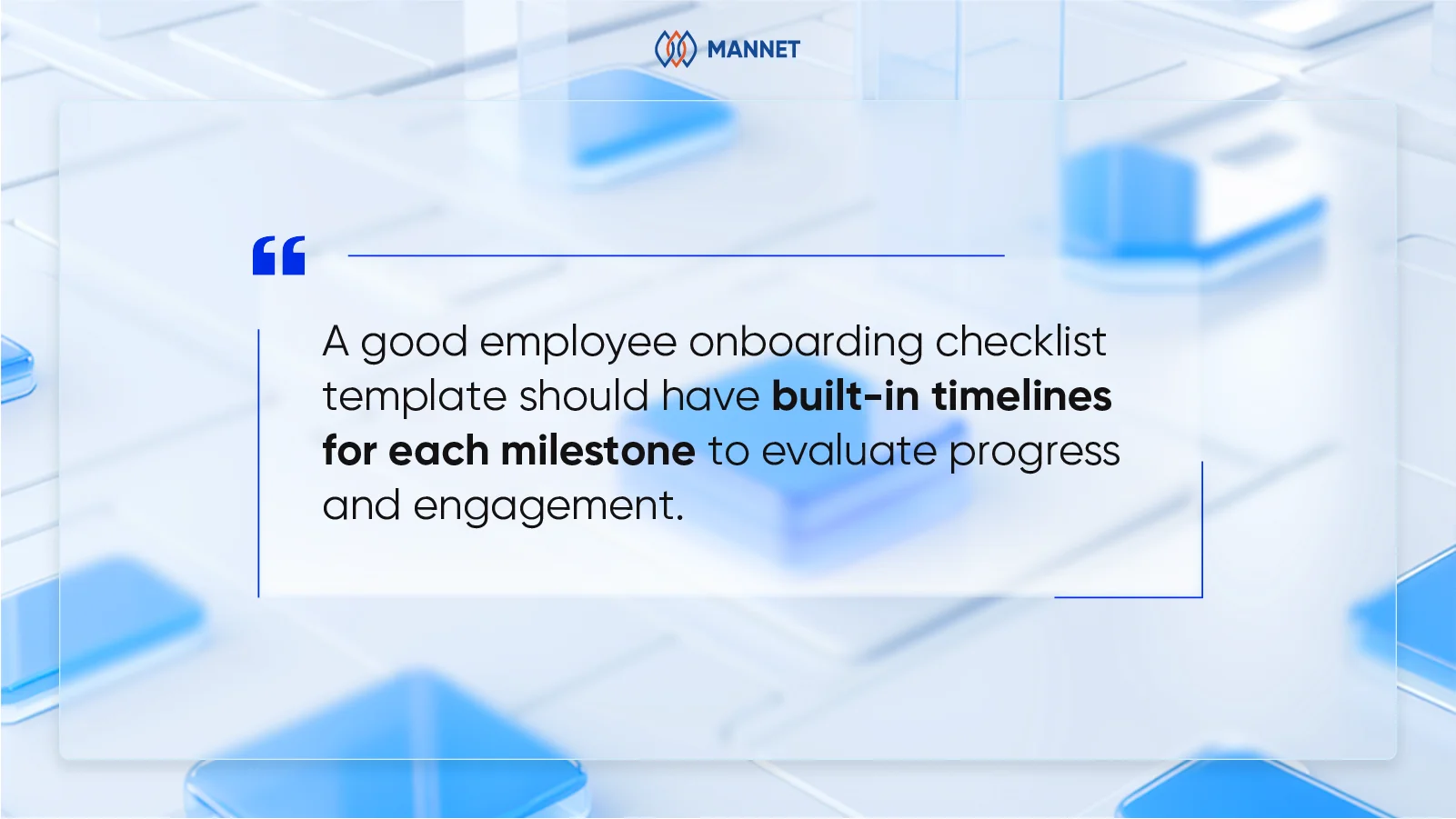
These check-ins give new hires clarity on their growth path and allow leaders to identify any challenges early.
Related: What Is Employee Handbook? Key Benefits And What to Include
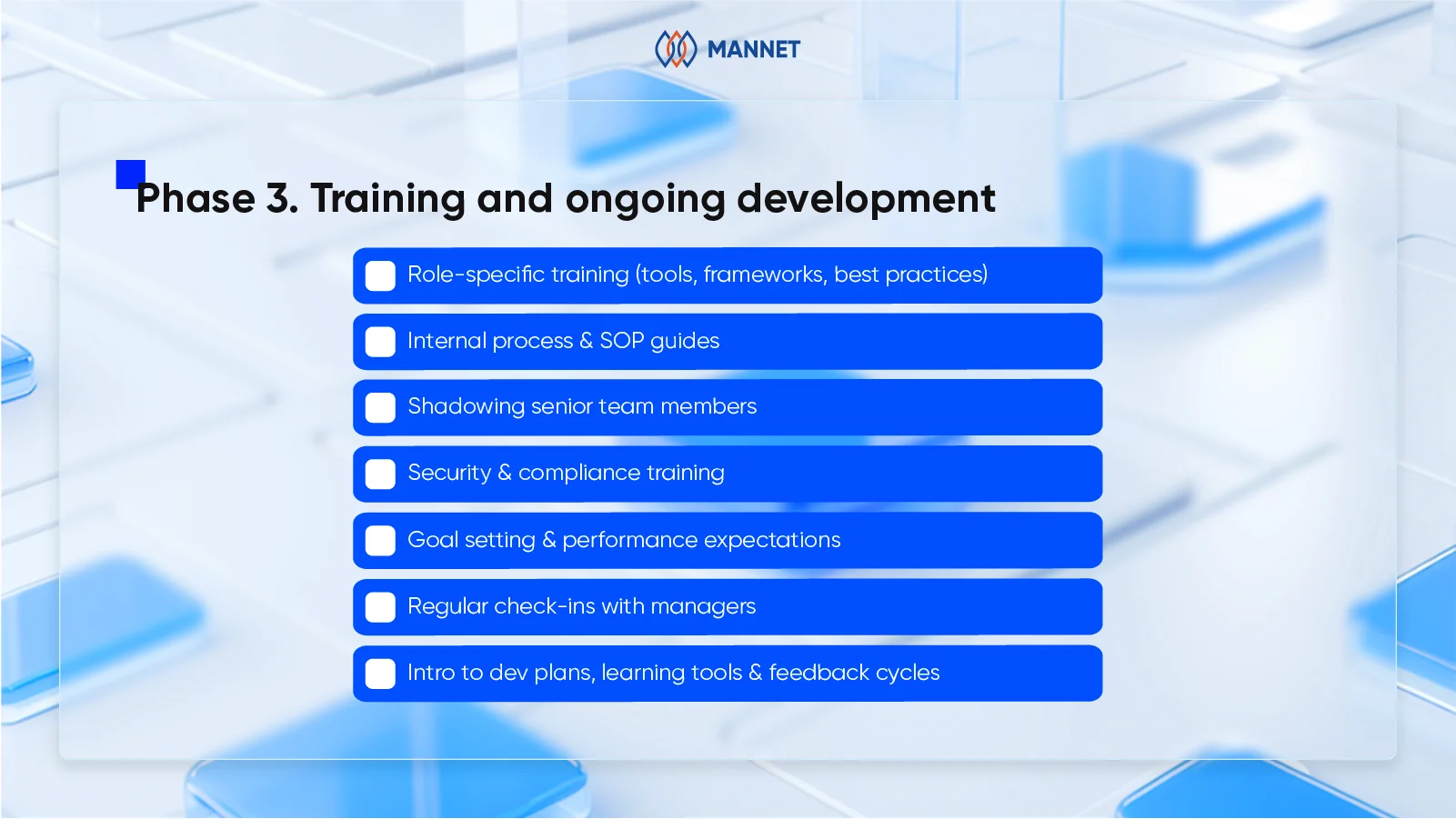
Training and ongoing development checklist
Frequently Asked Questions About Employee Onboarding Checklist
- How long should the onboarding process take?
While the initial orientation might last one to two weeks, full onboarding typically spans 90 days. For complex or senior technical roles, it may extend up to six months.
- What’s the difference between onboarding and orientation?
Orientation is a one-time event or series of sessions aimed at introducing the company. Onboarding is a longer, strategic process that supports the employee’s integration, training, and early development.
- Can businesses use the same onboarding checklist for remote employees?
Not exactly. A remote employee onboarding checklist needs to include logistics such as equipment delivery, virtual access setup, and remote collaboration tools. Communication frequency and methods also need to be intentionally structured.
Final Thoughts On Employee Onboarding Checklist
The onboarding process has a big impact on how content and successful a new employee will be in their role. When companies have a clear and thoughtful employee onboarding checklist in place, new hires feel more supported, more confident, and better equipped to grow within the team.
For businesses hiring in Vietnam, ManNet provides end-to-end recruitment services and HR consultation. We help you set up onboarding processes, prepare all required documents, and guarantee everything complies with local labor laws – whether your hires are remote or onsite.
Contact ManNet today!



